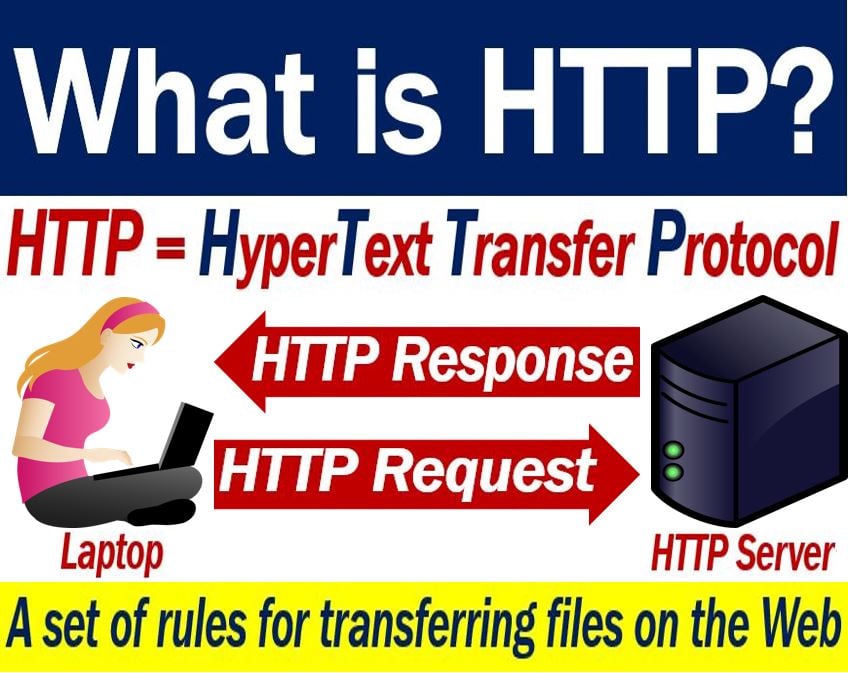HTTP – definition and meaning
HTTP stands for HyperText Transfer Protocol. It is the underlying protocol that the World Wide Web uses. It defines how we format and transmit messages. HTTP also determines what actions Web browsers and servers should take when they receive various commands.
A protocol is an official procedure or set of rules governing how to do something.
The World Wide Web, Web, or WWW is an online information system that allows us to connect documents to other documents through hypertext links. It subsequently allows online users to search for data by shifting from document to document.
Put simply; HTTP is a set of rules for transferring files on the World Wide Web. ‘Files’ in this context, means text, sound, and graphic images. It also includes video and other multimedia items.
Whenever any of us opens our Web browser, we are indirectly making use of HTTP. A Web browser is a software application for retrieving and presenting information resources on the Web. Chrome, Opera, Firefox, Safari, and Edge, for example, are Web browsers.
Webopedia.com says the following regarding HyperText Transfer Protocol:
“HTTP is the underlying protocol used by the World Wide Web, and this protocol defines how messages are formatted and transmitted, and what actions Web servers and browsers should take in response to various commands.”

HTTP at work
When we enter a URL on a browser, it sends an HTTP command to the web server. It tells it to fetch and transmit a specific web page.
Do not confuse HyperText Transfer Protocol with HTML. HTML stands for HyperText Markup Language. HTML covers how we format and display web pages. It is a system for tagging text files to achieve color, font, graphic, and hyperlink effects on the WWW pages.
In other words, HTML is the special language people use to create web pages.
Nearly everything we see on our browsers is transmitted to our electronic communication devices over HTTP.
For example, when you opened this article’s web page, your browser sent several requests and received responses for each one. Each request and response occurred using HyperText Transfer Protocol.
HTTPS
There is another type of HyperText Transfer Protocol which we call HTTPS. HTTPS stands for HyperText Transfer Protocol Secure. This means that the information within the web pages that use HTTPS is secure.
Banks, online retailers, and credit card companies use HTTPS to keep their customers’ details secure.
The Web is not the Internet
Many people use the words Web and Internet interchangeably. In fact, they are completely different systems.
The Internet consists of a vast network of computers. They all connect to each other.
When people connect their devices to the Internet via their ISP, they become part of that ISPs network. ISP stands for Internet Service Provider. That network is connected to hundreds of thousands of other networks. All those networks make up the Internet.
The Web, on the other hand, is a collection of web pages that we can find on the Internet. It consists of a massive number of servers that host websites.
Each website (site) has several web pages. Each web page contains videos, images, animations, text, etc.
When we go on the Internet, our communication devices use Web browsers to access the Web.
Video – What is HTTP?
In this F5 Dev Central video, Peter Silva explains what HTTP is.

